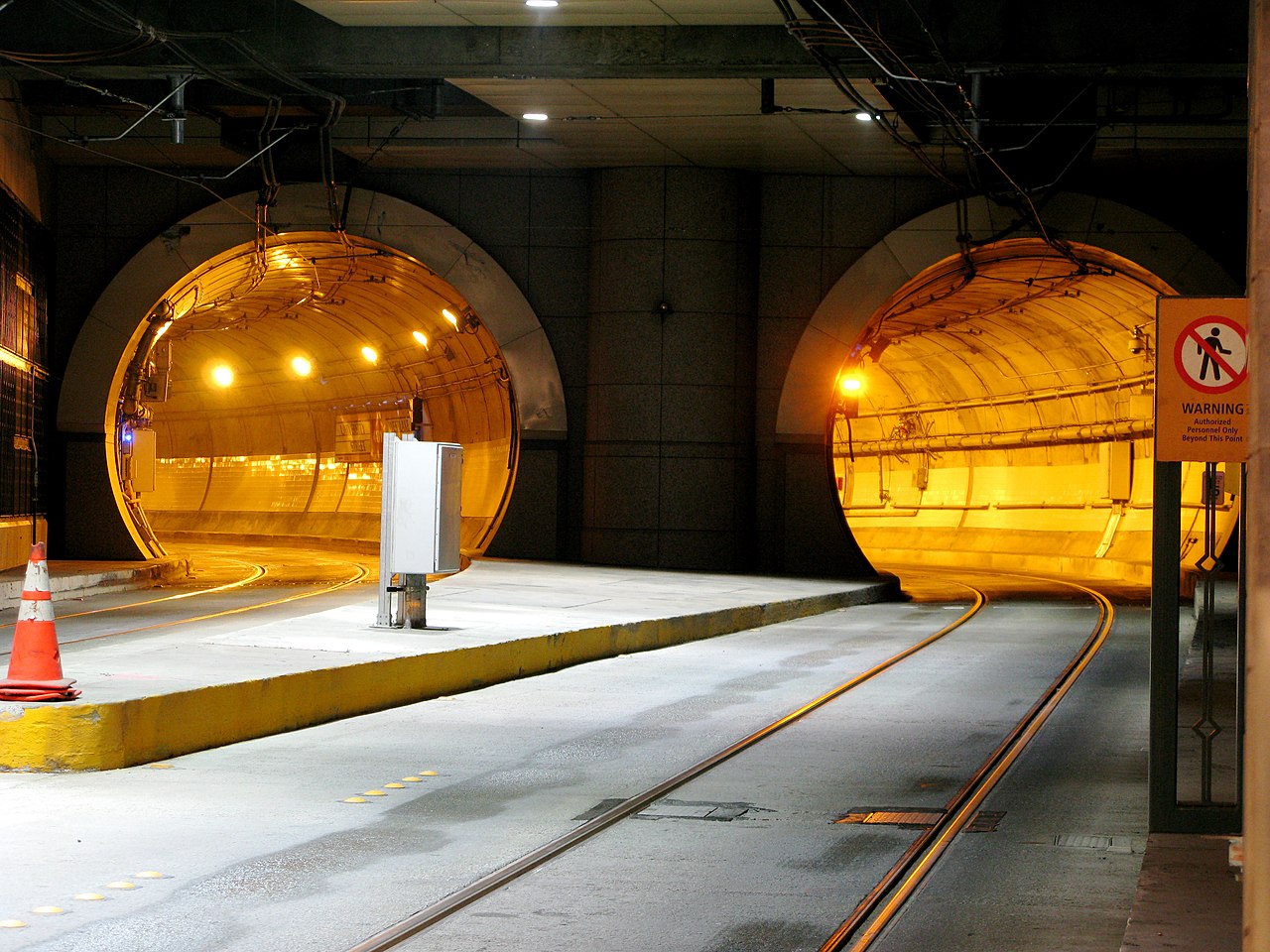Every year the Homer M. Hadley Memorial Bridge closes for the Blue Angels performance. As one of only four ways around Lake Washington, the closure hugely impacts the region’s transportation system. It is a safety zone mandated by the FAA to “keep the public and pilots safe and to minimize distractions.” The bridge closures take place midday on weekdays and weekends, and causes 1.5 mile backups, while affecting the two all-day routes over I-90.
These two routes–both Metro-operated Sound Transit routes 550 and 554–miss two stops: The Rainier flyer stops and Mercer Island Park & Ride. It is impossible to serve the Rainier flyer stops during the closure, as the stops can only be accessed from the bus-only express lanes in the center of I-90, and the next accessible exit is on the other side of the bridge that is closed. Luckily, routes 7 and 106 provide a frequent (though not as quick) connection from Downtown to the Rainier flyer stop.
According to data from Sound Transit’s 2017 Service Implementation Plan, Mercer Island passengers account for 10-11% of route 550’s average ridership and 4-7% of route 554’s average ridership. The SIP numbers suggest that about 60-85% of riders originating at Mercer Island are headed towards Seattle.
Neither Metro nor ST were able to provide me with stop-level data, but unofficial ridership numbers show that route 550’s weekday demand drops sharply after about 9:15 and doesn’t pick back up until mid-afternoon. Much of route 550’s demand on Mercer Island centers around parking availability at the 447 stall Park & Ride, so once the lot is full, ridership originating at that stop drops. Weekend ridership is across the board making it difficult to draw conclusions.
Almost two thirds of route 550’s Bellevue ridership uses the three stops in Bellevue’s downtown core; if ridership from the recently-closed South Bellevue Park & Ride is excluded that number jumps to almost 80%.
Despite the majority of the ridership not going to Mercer Island, Metro has designed their reroutes to prioritize Mercer Island ridership. After leaving the tunnel, the route heads over SR-520 (the only logical choice) and sails past Bellevue in order to reach a connection in southern Bellevue to connect to a temporary Metro shuttle. From there it continues on its normal route, albeit on a much delayed schedule. In 2016 and 2017 I inadvertently timed it just right so that I was able to catch a rerouted trip. The reroutes were slightly different each year.

Blue: Normal route; Red: Common reroute; Black: 2016 reroute; Green: 2017 route
2016’s reroute was slightly more sensible, but due to the closure of the South Bellevue Park & Ride for East Link construction this was no longer possible in 2017. In 2016, the route used the Bellevue Way ramp from SR-520 and ran without stops between SR-520 and South Bellevue Park & Ride. At the Park & Ride, the bus was able to make a U-turn through the park & ride and continue to/from its normal route. Despite vocal objections from riders, the operator didn’t make any stops in Bellevue while continuing to/from 520.
In 2017, the same route wasn’t possible and the route was extended even further to Eastgate Park & Ride to connect to the Mercer Island shuttle. From Eastgate, the route continued to/from Bellevue Way via I-90 to its regular route.
I asked Metro why stops couldn’t have been made in reverse order, and King County’s Scott Gutierrez explains:
The ST 550 reroute also was seen as the most efficient and least confusing for customers and operators. For customers, this reroute essentially maintained the usual sequence in terms of stops (other than the I-90 stops). Making the Bellevue stops in reverse order would have been very challenging to communicate to customers. For operators, this option allowed them to use an established layover location with access to comfort facilities.
The operator I spoke to mentioned that he didn’t have any access to the comfort station and was running his trip late as a result.
Having a chance to reflect on this, I’ll agree that running in reverse order isn’t the best solution. However, there is a solution that would allow operators adequate layover time, provide access to all regular stops outside Seattle, and prioritize the highest ridership routes.
Similar to Zach’s idea to permanently move route 550 to SR-520, the reroute could be changed to serve Bellevue immediately, with the Mercer Island shuttle connecting in Downtown Bellevue and serving Bellevue Way riders. The rerouted trip could end at the existing layover space next to the Bellevue Library or at the Bellevue Transit Center before looping back to the library. This means the operator of the 550 would likely have a much longer layover, as any delays from 520 would be more than offset by the truncation of the route. However, this means that the Mercer Island/Bellevue Way shuttle would have much higher platform hours. The connection in Bellevue could be made in a “bump and run& fashion–as both routes serve the same stop, and once passengers deboard from one route and board the second, each leaves, ensuring a seamless transfer for all.
There is no doubt that closing off any part of a route is going to cause delays, inconvenience riders, and cause confusion–even if no stops are missed. Despite costing more to implement, it prioritizes the locations where the most riders are headed.
























